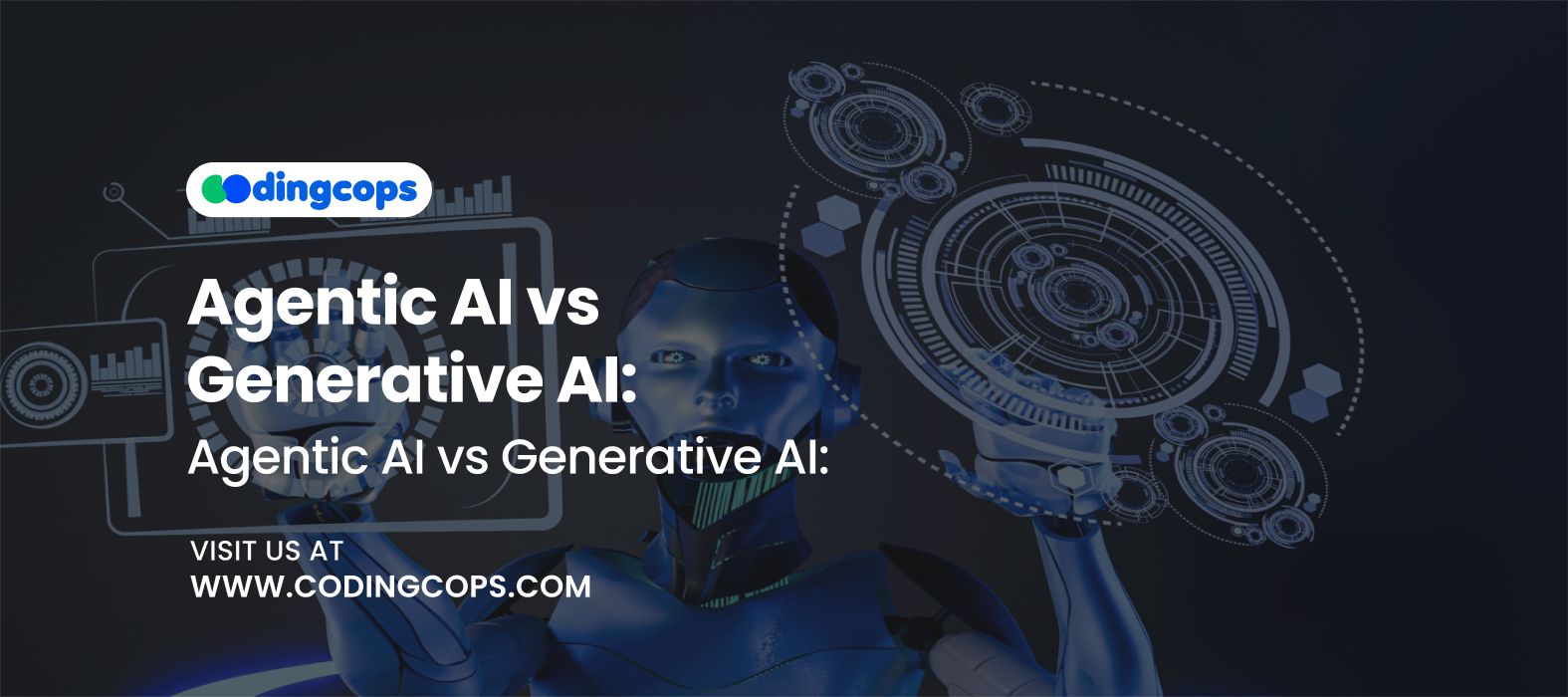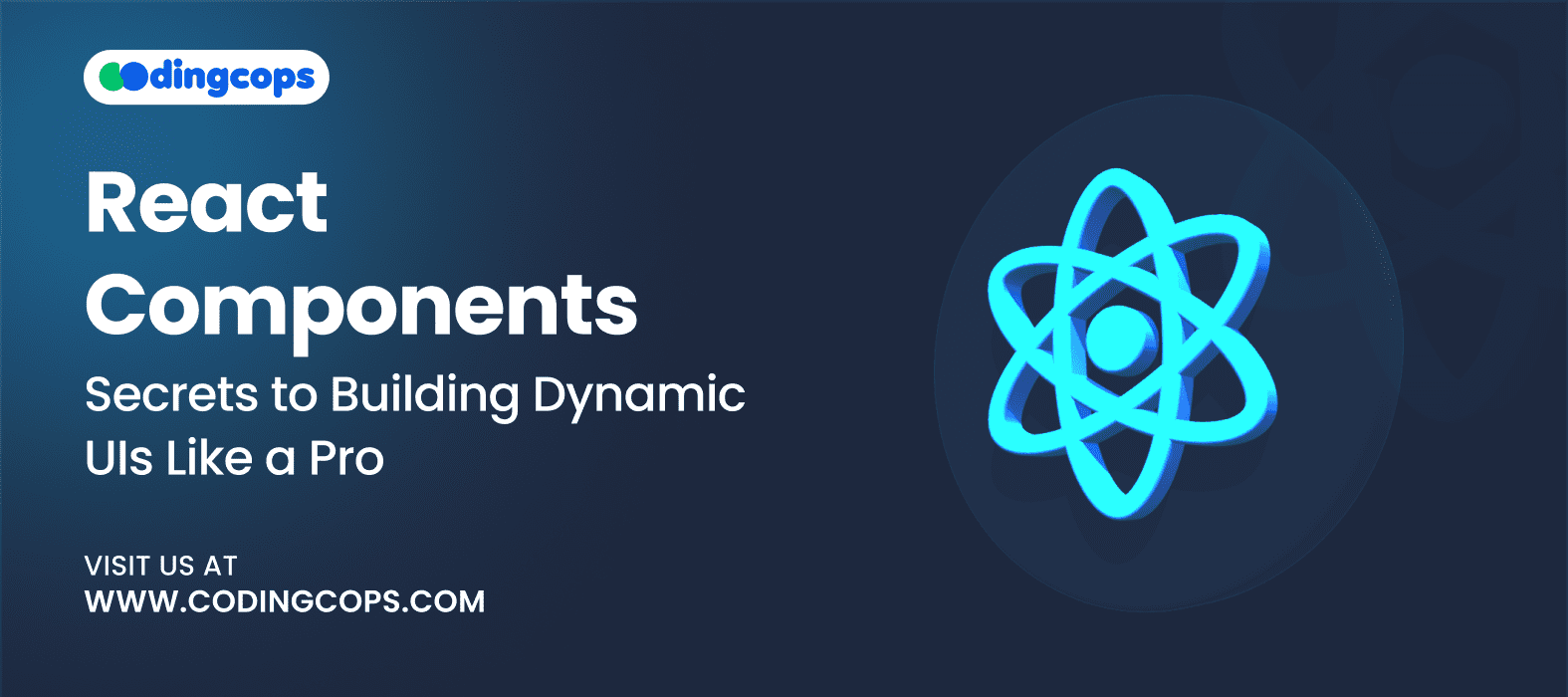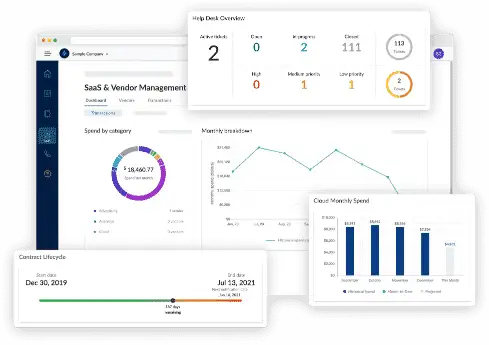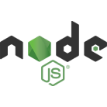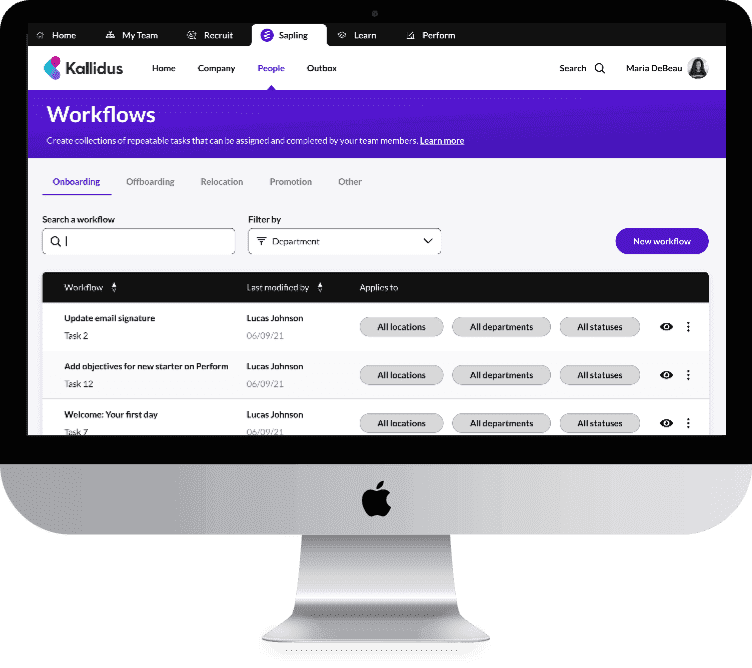According to Exploding Topics, the global AI market is currently valued at $391 billion. Furthermore, the AI industry will increase in value by around 5x over the next few years. This is because of the increasing demand for AI development. From chatbots to autonomous systems, AI solutions are now becoming the norm.
However, it’s also true that not all AI are the same. Two terms frequently making headlines are Generative AI and Agentic AI. The difference between these two is critical for businesses and everyday users who interact with intelligent systems. So, in this guide, we will discuss the differences between these two.
What is Generative AI?
A subset of artificial intelligence models known as generative AI is made to produce original material as opposed to merely analyzing or classifying preexisting data. Furthermore, generative AI creates new outputs that are similar to the training data but not exact replicas after learning patterns and structures. Furthermore, these outputs can be text or even 3D models.
Also, generative AI is creative and adaptive. It’s capable of producing novel and human like responses, whether that’s writing a poem or composing a soundtrack.
How Generative AI Works?
Deep learning is usually the foundation of generative AI technology, especially designs like transformers and variational autoencoders. The GPT family is one of these converters that has had the biggest influence on natural language production.
Here’s how it works:
- Pretraining: The model is exposed to massive datasets to learn grammar and logic.
- Fine tuning: For particular tasks, specialized data is used to develop the model.
- Inference: The model uses the input and its knowledge to anticipate the most likely result when a user prompts it.
Additionally, generative models work through probabilistic prediction; they don’t understand meaning in the human sense but generate outputs based on statistical likelihood.
Benefits of Generative AI

Accelerated Content Creation
The capacity of generative AI to generate high-quality material rapidly is one of its biggest benefits. Generative models can finish activities like writing code or generating emails in a fraction of the time it would take a person. For instance, with just a word input, programs such as Midjourney can offer images quite quickly. People and companies may react to market trends or creative problems with previously unheard of efficiency due to this quickness.
Cost Efficiency
By automating tasks that would require specialized professionals, generative AI reduces operational costs across departments. Startups, in particular, benefit from this technology by gaining access to services that would otherwise be too expensive to outsource.
Enhanced Creativity
Generative AI can stimulate fresh ideas in addition to reproducing preexisting ones. Designers experiment with new visual trends, and writers employ AI to generate ideas. Additionally, these models frequently offer paths that a person may not think of since they can generate outputs that incorporate several patterns. Because of this, generative AI is an effective partner in the creative process.
Personalization at Scale
Although it takes a lot of effort and is sometimes unfeasible to create tailored experiences by hand, modern customers demand them. As a result, generative AI enables the large-scale delivery of particular content. AI may, for example, create customized email campaigns according to user preferences or instantly modify the content of websites.
Multimodal Capabilities
Models of generative AI are not restricted to a single output type. They may also operate in a variety of forms, such as code and text. Because of its adaptability, businesses may use a single underlying technology to create cohesive creative pipelines. An AI may, for instance, compose a narrative and produce images to go with it. Additionally, this simplification of multimodal content production creates new opportunities for media.
What is Agentic AI?
Agentic AI represents a significant shift in how AI is conceptualized and applied. While generative AI is focused on content creation, agentic AI is centered around autonomous action. An agentic AI system doesn’t just respond to a single prompt; it sets objectives and interacts with its setting to accomplish a certain objective.
How Agentic AI Works?
Agentic AI is a systematic approach to building autonomous and goal driven AI entities known as agents. Moreover, these agents are designed to think, plan, and adapt in pursuit of specific objectives. Furthermore, Agentic AI functions as an orchestrator that coordinates reasoning and tool usage to execute multi-step tasks independently.
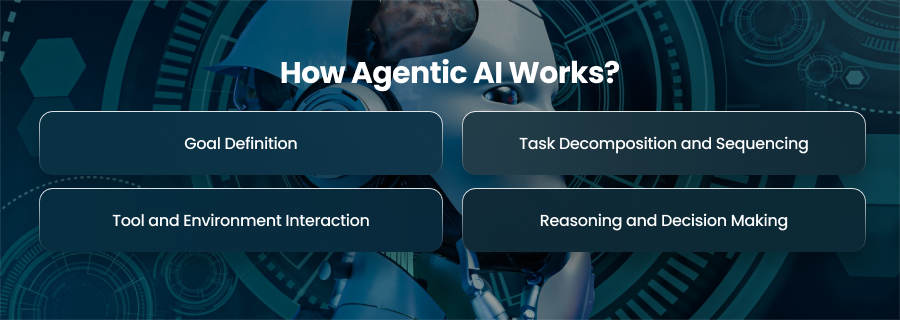
Goal Definition
Every agentic AI system begins with a goal. This could be a broad objective like researching the best project management tools for startups. The user’s input is seen as a mission rather than merely a one-time order. The agent takes this objective and starts to devise a plan to accomplish it, frequently breaking it down into smaller tasks.
Usually, a planning module drives this process, analyzing the aim and prioritizing tasks using broad language models like GPT-4. In more advanced systems, techniques from operations research or reinforcement learning.
Task Decomposition and Sequencing
Once the goal is understood, the agent breaks it down into manageable parts. For example, if the goal is to generate a market report, the agent may divide it into:
- Identifying relevant sources
- Extracting useful data
- Summarizing insights
- Formatting the final document
This task decomposition happens either in a linear sequence or through a dynamic loop, where new subtasks are produced as earlier ones are finished. Moreover, tools like BabyAGI are built on such looping task queues, agents constantly evaluate the current state.
Tool and Environment Interaction
A core difference between agentic and generative AI is the former’s ability to interact with the outside world. To complete tasks, agents often need access to a suite of tools like browsers or even command line interfaces.
Also, frameworks like LangChain and Crew AI make this possible by integrating modular components that the agent can call upon when needed. Based on the task it is attempting to accomplish, the agent then chooses which tool to employ and when. In the same way that a person selects the appropriate tool for each task, this allows for a a degree of mental adaptability.
Reasoning and Decision Making
Agentic AI systems possess a degree of situational awareness that allows them to reason about context and make informed decisions. Moreover, this capability is built on LLM powered reasoning chains and structured memory.
In order to get better over time, some sophisticated agents also use reinforcement learning. Based on the success or failure of their actions, they receive feedback and modify their methods accordingly.
Distinctions Between Generative AI and Agentic AI
| Aspect | Generative AI | Agentic AI |
| Core Function | Creates content such as text and images | Acts autonomously to complete tasks or achieve goals |
| Primary Capability | Generation of novel outputs based on training data | Decision making and executing actions across multiple steps |
| Human Involvement | Requires prompts or inputs from users to initiate content generation | Operates with minimal human input, often self initiating based on goals |
| Task Nature | Typically single turn and limited in scope | Multi-turn and capable of adapting to new tasks |
| Goal Orientation | Not inherently goal-driven; responds to queries or prompts | Goal oriented; works toward achieving defined objectives |
| Reasoning and Planning | Limited reasoning, mostly reactive to prompts | Uses planning, reasoning, and sometimes memory to act strategically |
| Autonomy Level | Low autonomy, relies heavily on the user instructions | High autonomy, capable of self directed task completion |
| Integration Complexity | Easier to integrate into existing workflows for content creation | Requires more complex system integration, often involving tools, APIs, etc. |
How Do They Work Together?
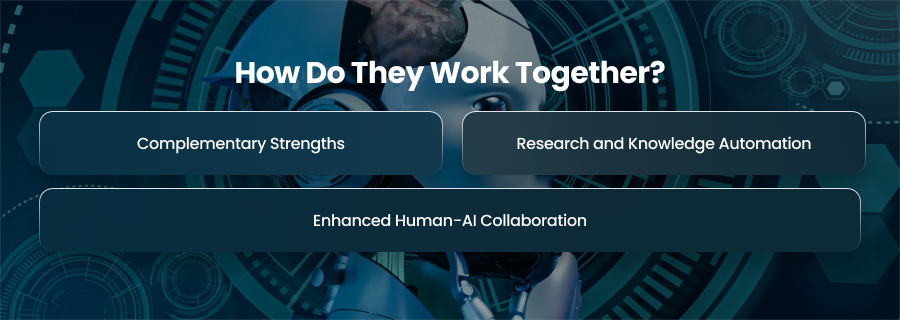
Complementary Strengths
Generative AI provides creativity and fluency, allowing systems to generate realistic dialogue or functioning code. Moreover, agentic AI introduces autonomy and goal orientation, allowing systems to break down complex objectives and interact with their surroundings to complete objectives. So, when used together, generative AI can handle communication or creative output, while agentic AI can take that output and use it to inform real world actions.
Research and Knowledge Automation
Another area where generative and agentic AI combine effectively is in research automation and building AI apps. Suppose a business user need a market analysis report. An agentic AI agent can deconstruct the goal into smaller tasks and analyzing trends. Additionally, it can summarize data and display them in an understandable and natural way using generative AI. In addition to reducing manual labor, this kind of automation speeds up decision making in a variety of businesses.
Enhanced Human-AI Collaboration
Perhaps the most exciting outcome of combining generative and agentic AI is the potential to redefine human-AI collaboration. Moreover, these hybrid systems don’t just respond to prompts, they act with purpose. For example, an AI marketing assistant might identify a new trend and generate ad copy and visual based on that trend. With both AI types working in unison, teams can focus on high level strategy while the AI handles execution and optimization.
Limitations of Both Agentic AI and Generative AI
Limitations of Generative AI
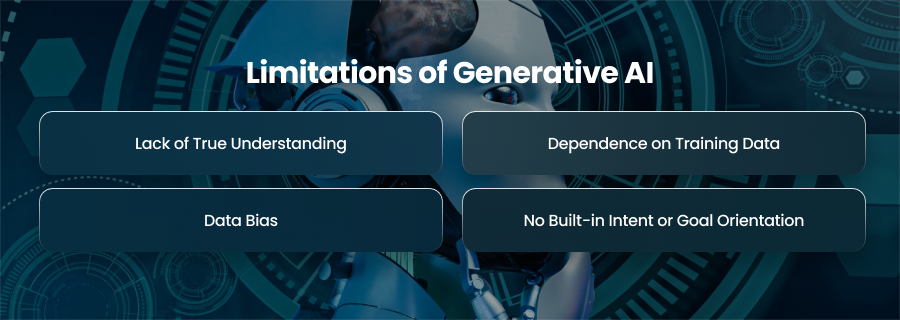
Lack of True Understanding
Generative AI systems are statistically driven and don’t posses real comprehension. Moreover, they forecast and produce words or code based on training data rather than understanding meaning or context. This often leads in outcomes that seem plausible but are faulty either logically or factually.
Dependence on Training Data
Generative AI is only as good as the data it has seen. It struggles with generating content in niche areas where training data is limited or outdated. Moreover, it also cannot reason about events or trends that occurred after its last training cutoff unless explicitly finetuned or connected to external tools like the web.
Data Bias
Large datasets that frequently contain detrimental biases and historical biases are used to train generative models. Their products may, therefore, inadvertently support or even amplify those biases. This raises moral questions, especially in sensitive areas like employment.
No Built-in Intent or Goal Orientation
Generative AI doesn’t pursue goals or have intent. Unless integrated into a larger system, it lacks the ability to plan or act, yet it responds to cues. Because of this, it is excellent at helping with tasks but not for handling processes or making strategic choices on its own.
Limitations of Agentic AI

Complexity in Goal Planning and Decomposition
While agentic AI excels at acting towards goals, it struggles with open ended or poorly defined objectives. Complex tasks often require nuanced judgment and prioritization. So, without precise instruction, agentic AI can take suboptimal or even damaging actions.
Heavy Resource Requirements
Agentic systems typically involve multi step reasoning, real time decision making, and interaction with APIs or environments. Hence, this makes them computationally expensive and infrastructure heavy. Running agentic AI at scale can demand significant processing power and careful orchestration of services.
Error Propagation Across Tasks
Since agentic AI performs multiple steps in a sequence, a small error early on can snowball into major failures later. For example, a faulty API call or misinterpreted input in the planning phase can compromise the entire task execution. Debugging these autonomous processes is still a challenge.
Safety and Control Concerns
As agentic AI becomes more autonomous, the risk of unintended behavior increases. Giving an agent too much decision making freedom without proper boundaries can result in misuse or ethical issues.
Final Words
Our interactions with technology are changing as a result of generative and agentic AI, which endows people with unprecedented levels of creativity and agency. They do have certain shortcomings, though. Therefore, it is crucial to comprehend their limitations for effective use. These algorithms can support human judgment in challenging, real world activities when used responsibly and under human supervision.

